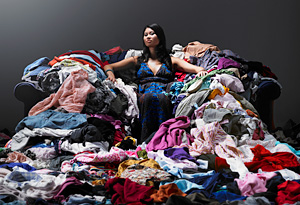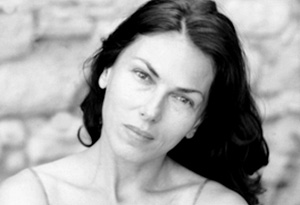The New Consumer: How to be a Mindful Shopper

Photo: Lifesize/Thinkstock
During her years as a model and fashion writer, Avis Cardella became an addict. Her drug of choice? Shopping. In Spent: Memoirs of a Shopping Addict, she reveals the lessons she learned about mindful shopping.
The last thing I expected after confronting my decades-long shopping addiction was being able to enjoy shopping again. Yet, after coping with the emotional root of my problem and contending with my unmanageable debt, I found myself experiencing a renewed love of shopping that was no longer marked by running away from difficult emotions or looking for definitions of self-worth in the newest "it" product.But this is exactly what shopping addicts do: They run away from their conscious selves, hide behind a mountain of stuff and seek the approval of others through their purchases. For nearly 15 years, this had been my standard operating procedure. And though, for a portion of that time, I managed to juggle it all into something that reasonably resembled the life of a successful freelance writer living in New York City (Carrie Bradshaw, anyone?), internally I was a cocktail of self-doubt, fear and sadness.
It's not surprising that I ended up asking myself: "How could a woman with a closet so full feel so empty inside?" According to researchers, nearly one in 20 Americans has a compulsive shopping disorder, and therapists saytheir compulsive behavior often can be traced to a lack, a desire to fill a void.
When I realized that I had gazed into that abyss for long enough, I mustered the strength to make a change. With my financial life in shambles, the first step was to seek credit counseling. This, as it turned out, was to be the least difficult aspect of my recovery. The more challenging issue would be facing myself. What had I really been shopping for all those years?
In tracing my earliest brushes with impulse buying to a time directly following my mother's sudden and untimely death, I realized that I had been shopping to avoid facing my grief. I also came to realize that I had been hiding behind a mask of perfection—trying to appear perfect on the outside had been a foil to deflect from how imperfect I felt inside.
These self-discoveries were not only gratifying but they also proved to be the key to successfully combating my addiction. My road to recovery involved a lot of soul-searching, looking into my past, reuniting with my family, long walks in the park to stave off shopping hunger pangs, cleaning out unhealthy relationships and my closet, meditation and eventually adopting a new approach to shopping that involved mindfulness.
What she discovered about mindful shopping

Photo: Avis Cardella, photographed by Timothy Gurney
At first, this newfound awareness felt more like a burden than a rebirth. In fact, there were periods in which I felt paralyzed by being so "present' in the shopping experience. A trip to buy a new pair of Nikes left me standing before the display wall, unable to make a choice that wouldn't be a dreadful mistake.
But this phase quickly passed, and what took its place was unburdened and joyful shopping that I could last remember having experienced as a teenager.
What I quickly discovered in my mindful shopping was this:
Yes, I am more aware, but still not perfect.
And that's okay, because the biggest lesson of my new consumer behavior is that I don't need to be. There is such a thing as being enough and having enough. There is such as thing as being happy with what you have!
Avis Cardella is the author of Spent: Memoirs of a Shopping Addict. She found her calling writing about photography, fashion and culture after spending her formative years voraciously reading fashion magazines. She has written for British Vogue, American Photo and Surface,among other publications, and lives in Paris with her husband.
Keep Reading:
How meditation can help free you from addiction
Understand your shopping habits and why you buy
Why is it so damn hard to change?
But this phase quickly passed, and what took its place was unburdened and joyful shopping that I could last remember having experienced as a teenager.
What I quickly discovered in my mindful shopping was this:
- I was now aware of the difference between my wants and my needs and could determine when each was appropriate.
- By stopping to evaluate the meaning of a purchase before making it, I could be more discerning about purchases. I could avoid buying things that have no real place or purpose in my life.
- I can give meaning and definition to the things I buy; those things don't define me.
- Advertising and fashion magazine images can advise and inform me but not dictate to me.
- Mindfulness also meant no longer using shopping as an escape hatch, an easy out whenever I was confronted with difficult emotions. I realized that in sidelining grief with shopping for all those years, I had ended up trapped in that emotion, like a fossil trapped in amber. I was unable to be fully present in my relationships and unable to move forward in my emotional life.
- Instant gratification is another easy out for compulsive shoppers. Credit cards usually provide this kind of impulse satisfaction. But in becoming a more mindful shopper, I rediscovered the great pleasure from really wanting an item before purchasing it, considering how it will function in my home or fit in with my existing wardrobe. The long-lasting delights of buying something I truly want and will use far surpass that of giving in to an impulse purchase that will be thrown in the back of the closet!
Yes, I am more aware, but still not perfect.
And that's okay, because the biggest lesson of my new consumer behavior is that I don't need to be. There is such a thing as being enough and having enough. There is such as thing as being happy with what you have!
Avis Cardella is the author of Spent: Memoirs of a Shopping Addict. She found her calling writing about photography, fashion and culture after spending her formative years voraciously reading fashion magazines. She has written for British Vogue, American Photo and Surface,among other publications, and lives in Paris with her husband.
Keep Reading:
How meditation can help free you from addiction
Understand your shopping habits and why you buy
Why is it so damn hard to change?



